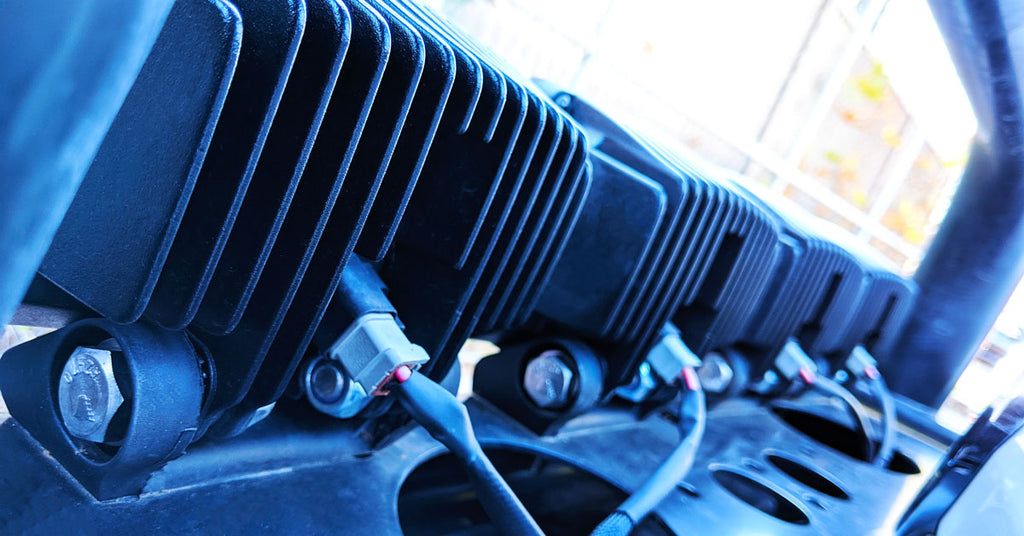
When purchasing driving lights for your vehicle, it’s obviously important to consider the performance and effectiveness of the lights but it's equally important to consider the brackets that hold them in place. Exposed to extreme temperatures and subject to constant shocks and vibration, the driving light mounts have to be strong and durable. For many, it might seem like steel is the obvious choice, but modern composite materials can deliver greater strength, lower weight, and longer life-span.
All Lightforce mounting brackets are constructed of glass-filled nylon, which is a composite material comprised of a polymer that is reinforced with small fibres of glass. It can be moulded into various shapes and provides robust strength, flexibility, and light weight. Glass-filled nylon is wear-resistant and has excellent mechanical qualities. In addition to its high compression and tensile strength (ability to withstand crushing and stretching forces), it is also highly resistant to fatigue, which is a weakening experienced by materials that are subject to repeated stress. It tends to occur at the weakest point, such as at the site of a weld, bend or hole. You can easily see the effect of metal fatigue by bending a paperclip back and forth – it won’t take many bends before the metal snaps.

The vibrations and shocks experienced on a vehicle, especially off-road, can lead to microscopic cracks that enlarge with repeated tension, until they reach a critical point and spread suddenly, causing the bracket to fail. Because glass-filled nylon is moulded, engineers can ensure that any potential fatigue points are eliminated by adding extra material to strategic areas, creating a bracket with uniform strength. To achieve the strength and longevity of our glass-filled nylon brackets in steel would require each unit to be substantially heavier. The glass-filled nylon used by Lightforce is a high quality, weatherproof material that is resistant to ultraviolet radiation and moisture, meaning it will not corrode or degrade with exposure to the elements. It also maintains its strength in extremes of heat and cold. The strength of steel is reduced in low temperatures and generally becomes brittle at around minus 30°C without expensive additives. With Lightforce products in use on every continent, from 50°C in Australia to minus 40°C in Sweden, it’s an important consideration.





























































